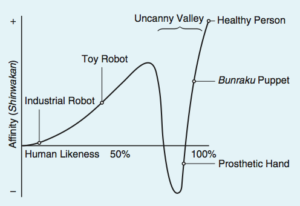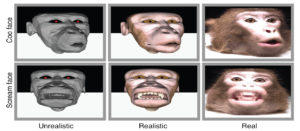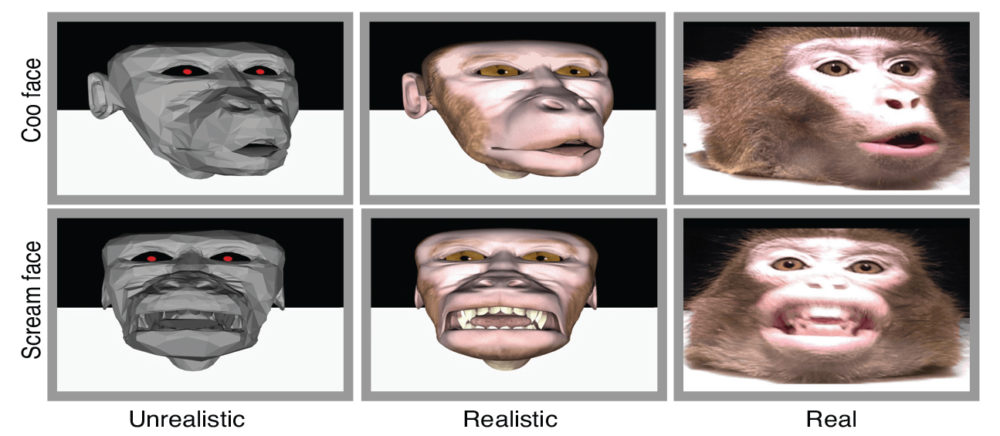In 2009, five cynomolgus macaques looked at a 17 inch computer screen, and looked away.13 Cynomolgus macaques, known by several aliases, including crab-eating, or long-tailed macaques, are perhaps best identified by their scientific name, Macaca fascicularis. These Old World monkeys have long, elegant tails, as their common names suggest, and they enjoy the water, often foraging for food there.
The five macaques in front of the computer screen were looking at, and away from, three distinct categories of images. One category consisted of photographs of their conspecifics,14 cooing or barking or doing nothing at all. The other images were either realistic computer generated monkey models, or poorly rendered, unrealistic monkey models, demonstrating the same range of behaviors.
By analyzing the amount of time the monkeys looked at the different categories of images, researchers at Princeton University determined that the monkeys, much like humans, experienced a phenomena known as the “uncanny valley.” Originally posited by Japanese roboticist Masahiro Mori15 in 1970, the “uncanny valley” refers to the negative feelings humans associate with anthropomorphic visual stimuli; as an object approaches human likeness, there is a sudden dip in our comfort level with it.16 It is commonly represented with the following graph:

The researchers believed that the macaques would spend more time looking at an image they preferred, and in this case, the five monkeys spent more time looking at the images of the real monkey and the unrealistic model than the realistic model. Because the responses of the macaques were consistent with the uncanny valley phenomenon, the researchers concluded that there may be an evolutionary basis for our reactions to certain visual stimuli. Therefore, there is some indication that humans and non-human primates as far removed evolutionarily as macaques share a common aesthetic.

13 Steckenfinger, Shawn A. and Asif A. Ghazanfar. “Monkey visual behavior falls into the uncanny valley.” Proceedings of the National Academy of Science 106 (43) Oct. 27, 2009: 18362-18366. Web. 5 Aug. 2015.
14 Conspecific: a member of the same species.
15 Mori, M. “The Uncanny Valley.” Trans. K. F. MacDorman & N. Kageki. IEEE Robotics & Automation Magazine 19(2) (2012): n. page. Web. 7 Jan. 2016.
16 To experience the effect for yourself, search “lifelike robot” in YouTube.
